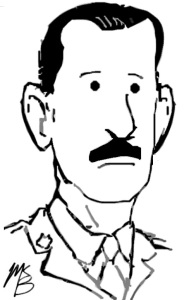Lieutenant-Colonel Lockie Fulton
Royal Winnipeg Rifles

I don’t want to say its the most important thing to ever happen to me in my life, but I’m not sure what beat it … It certainly should be something that is studied and something that people always remember … We went into it knowing it was going to be the experiences of our lives, and that maybe we wouldn’t have it for too much longer.
(Quoted in Winnipeg Sun, 5 Jun 2004, 6)
Born on 31 March 1917 in Gladstone, Manitoba, Lockhart Ross Fulton was a farmer and member of the 12th Manitoba Dragoons since the age of 16. In 1940, he joined the Royal Winnipeg Rifles which went overseas in August 1941. After years training in England, Fulton was promoted to major landed on D-Day as commander of “D” Company. “It was something to see those bullets skipping at you like stones across the water,” he recalled on the fiftieth anniversary of the invasion. “I though it I jumped high enough. I might not get hit.”




